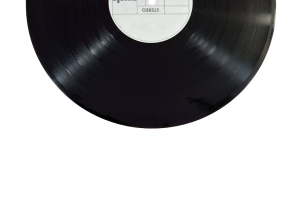Keeping track of your menstrual cycle is important for many reasons. A period calculator is a simple tool that helps predict your next period and understand your cycle better. This article will explain what a period calculator is, how to use it, and why it’s useful for everyone who menstruates. The goal is to make this topic easy to understand and helpful to use.
What Is a Period Calculator?
A period calculator is an online or app-based tool that helps you estimate when your next period will start. It works by using information about your past menstrual cycles, such as the date your last period began and the average length of your menstrual cycle.
The menstrual cycle means the time from the first day of one period to the first day of the next period. This cycle generally lasts between 21 to 35 days, with 28 days being the average.
A period calculator can also provide information on:
- When you might ovulate (the time when you are most fertile)
- The fertile window (days when you are most likely to conceive)
- The estimated start and end dates of your period
Using a period calculator doesn’t require any special skills — just some information about your recent cycles.

Why Use a Period Calculator?
Using a period calculator has several advantages:
- Predict your next period: Knowing when your period is coming helps you plan your month better, be prepared with sanitary products, and avoid surprises.
- Understand your cycle: Tracking your cycle over time helps you notice irregularities or changes that might require medical attention.
- Plan for pregnancy or avoid it: If you want to conceive, knowing your fertile days is helpful. On the other hand, if you want to avoid pregnancy, understanding when you ovulate can guide your choices.
- Manage symptoms: Periods can come with symptoms like cramps, mood swings, or bloating. Knowing when your period will start can help you prepare and manage these symptoms.
Cycle irregularities can happen due to stress, illness, hormone changes, or other health conditions like PCOS (polycystic ovary syndrome). A period calculator can help you keep track and share useful information with your healthcare provider if needed.
How to Use a Period Calculator?
Using a period calculator is quite simple. Here’s a step-by-step guide:
- Note the first day of your last period (LMP)
This is the first day you started bleeding. - Know your average cycle length
Count the number of days from the first day of your last period to the day before your next one. Usually, this number ranges between 21 and 35 days. - Enter the length of your period
This is the number of days your bleeding usually lasts. - Input this data into the calculator
You can find period calculators online, such as on Period Calculator, or use apps like Flo or Motherhood India. - Click ‘Calculate’ and get predicted dates for your next period, ovulation, and fertile window.
What Affects the Accuracy of a Period Calculator?
Period calculators give estimates based on the information you provide and average cycle patterns. However, some factors can affect the accuracy:
- Irregular cycles: If your cycle length changes a lot from month to month, it may be harder to predict exact dates.
- Stress and lifestyle changes: Stress, sudden weight changes, illness, or travel can shift your cycle.
- Hormonal imbalance: Conditions like PCOS or thyroid problems can disrupt your cycle.
- Medications: Certain medicines, including birth control, can change your cycle.
For more precise tracking, using period tracking apps that record daily symptoms and cycle changes can help refine predictions over time.
Benefits of Tracking Your Period
Tracking your menstrual cycle regularly with a period calculator or app can improve your health awareness:
- Detect irregular patterns: Spot changes like missed periods or unusually long or heavy bleeding, which can signal health issues.
- Support fertility awareness: Helps in identifying the best time for conception or contraception.
- Plan lifestyle and work: Better manage social events, exercise, or travel by knowing when your period is expected.
- Support medical consultations: When visiting a doctor, having a record helps with diagnosis and treatment.
Common Menstrual Cycle Terms to Know
- Menstrual cycle: The whole process from the first day of one period to the next.
- Menstruation or period: The bleeding phase when the uterus lining sheds.
- Ovulation: The release of an egg from the ovaries, typically around the middle of your cycle.
- Fertile window: The days in your cycle when pregnancy is most likely if you have unprotected sex.
Understanding these terms helps in using a period calculator more effectively.
Tips for Better Period Tracking
- Record your period start and end dates as soon as they happen.
- Note any symptoms like cramps, mood swings, or changes in flow.
- Use consistent tools like a period calculator app to keep data organized.
- Review your cycle trends every few months to notice changes.
- Consult a healthcare provider if your periods are very irregular or if you have concerns.
Online Resources for Period Calculators
If looking for a reliable period calculator, try these sources:
- Period Calculator — Simple and quick online tool.
- Motherhood India’s Period Calculator — Includes tracking and ovulation predictions.
- Flo Period Calculator — Provides detailed cycle insights and uses AI for better predictions.
- Birla Fertility Period Calculator — Useful for tracking fertility along with periods.
These websites provide free, easy-to-use tools and helpful information about the menstrual cycle.
Final Thoughts
A period calculator is a helpful and easy-to-use tool that helps people who menstruate keep track of their cycles, plan better, and understand their reproductive health. While predictions are estimates, they offer a good guideline for what to expect.








